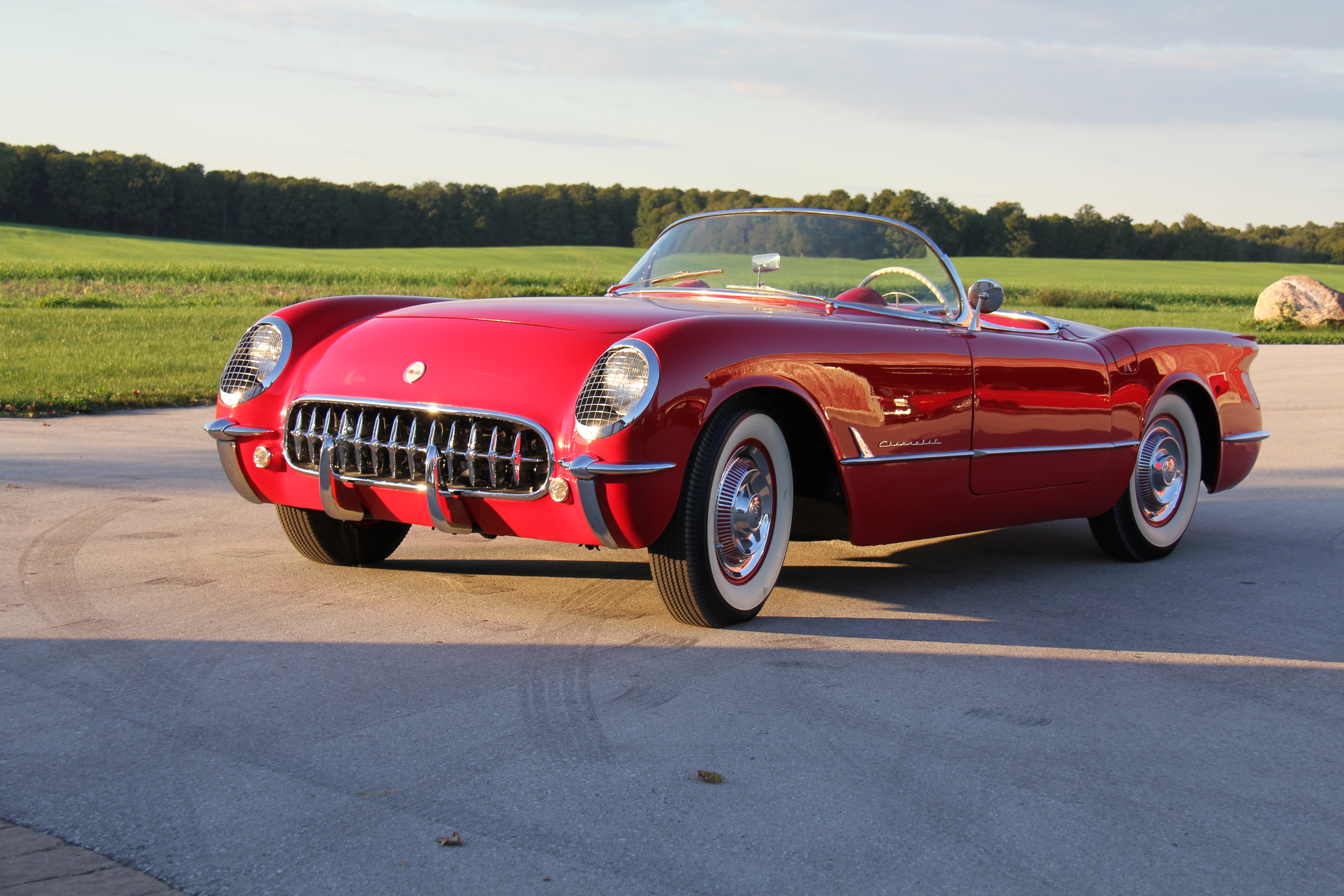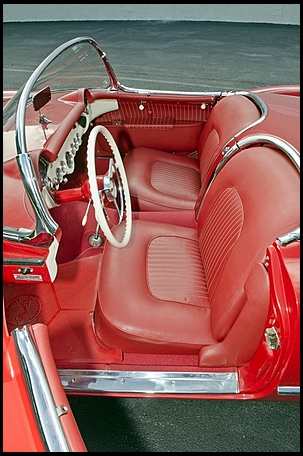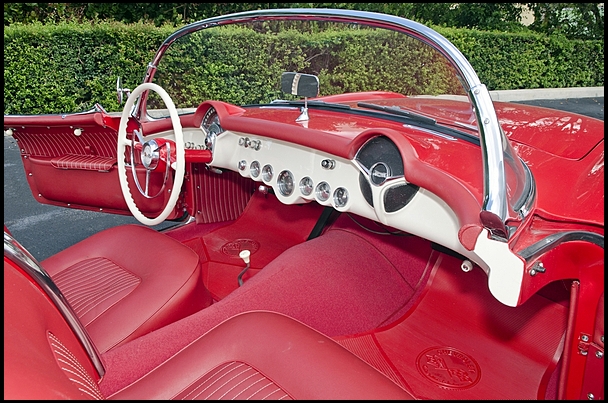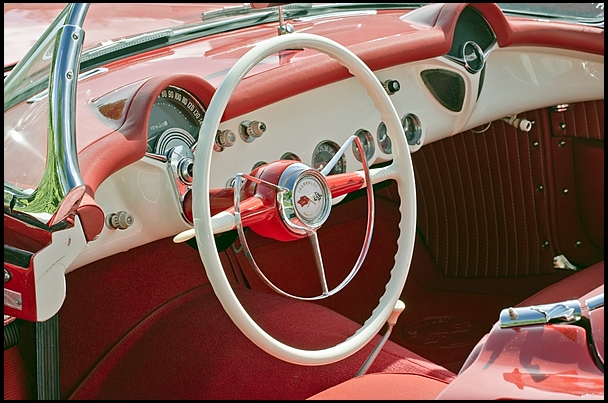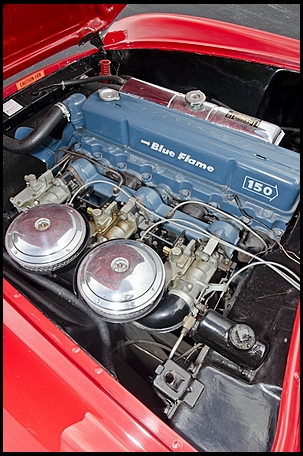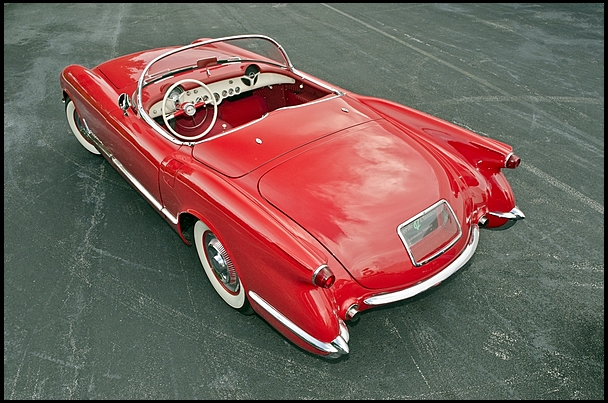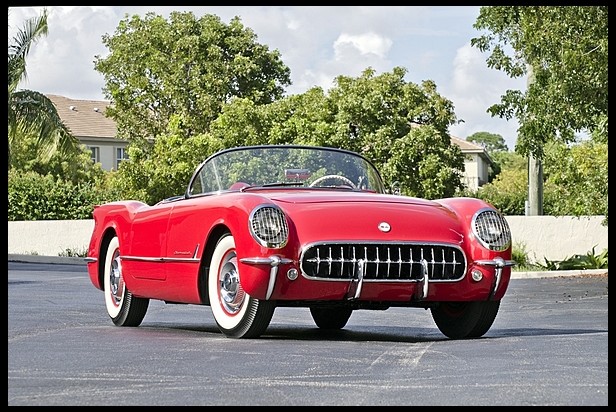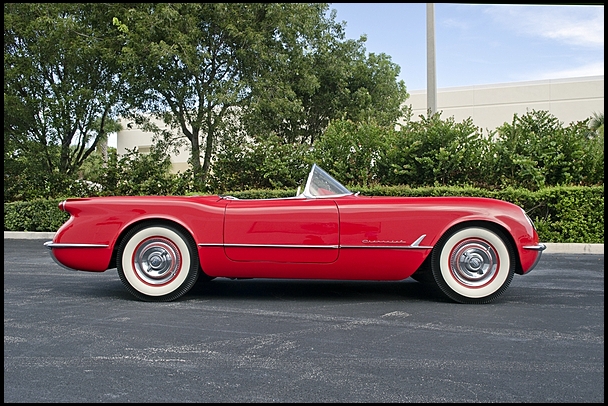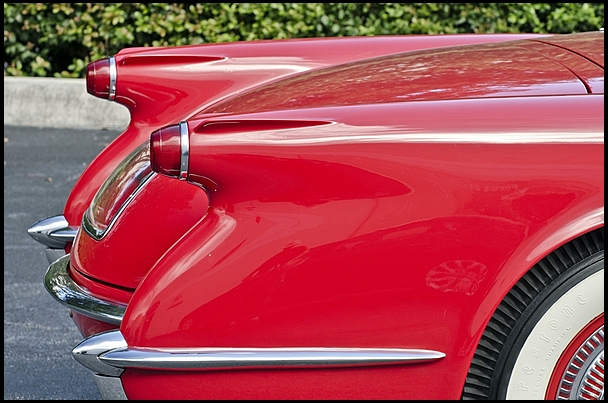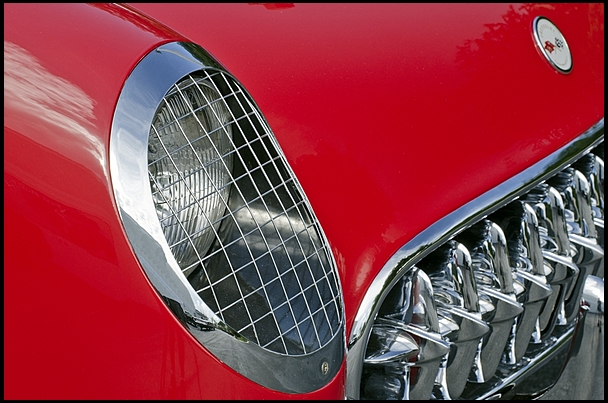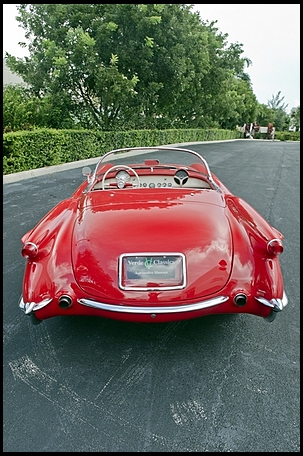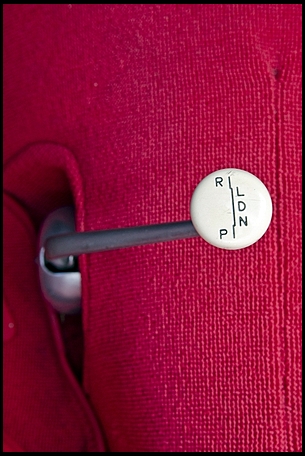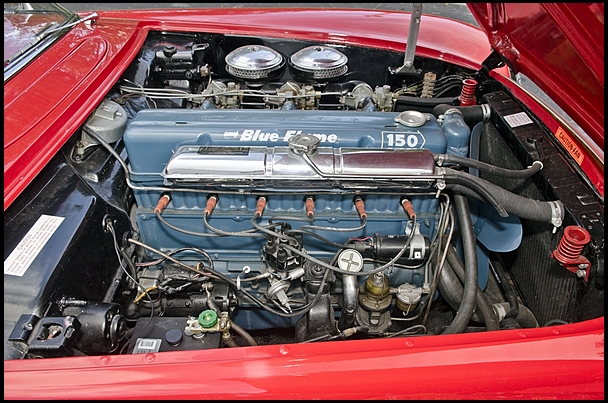1954 CORVETTE NO 17
Purchased from a former President of the Corvette Club of America, this immaculate 1954 Chevrolet Corvette roadster surpasses the quality of the original by finishing the car in Ferrari Rosso Corso Red and completing it with a red interior using glove-soft Red Italian leather (hand-stitched to match the factory-original patterns) and a Beige soft top. Beyond its striking finish, the car hews closely to factory correct in virtually every other respect.
It is powered by Chevrolet’s 235/150 HP Blue Flame Six engine with three Carter side-draft carburetors using the chromed dual pot air cleaners and double-stamped radiator surge tank indicative of later production Corvettes; the Powerglide 2-speed automatic transmission is operated by the stock factory floor shifter.
The car’s clean lines are complemented with excellent chrome and bright work, including the full-size spinner hubcaps on classic wide whitewall tires.
This is truly a beautiful car!
Harley J. Earl & The Designers
Not having the money nor the need… during the first two and half decades of the auto age, most of the designs for the early mass produced cars was done by engineers. Hence, cars were utilitarian and efficient. Looks was usually a second consideration. That began to change about the middle years of the Roaring Twenties. You can’t admire the lines of the Lang Collection’s 1926 Chrysler F58 and not see a well designed automobile.
While the great Coach Builders were keeping the upper crust motoring the highways in one-of-a-kind luxury, what did the mass producers like Ford and GM do to distance themselves from the competition? Well, Ford built millions of Model T’s cheaper than anyone else. GM added color to the mix as seen with the Lang Collections 1929 Oakland. But once everyone’s car were about the same price and all had a choice of colors, what then? That brings us to the increasing significance of design.
The rise of the importance of individual design as an integral part of putting a car on the road can be seen in the career of Harley J. Earl. Born in 1893 into a family of coachbuilders in Los Angeles CA, he came to the attention of GM in 1926 when designing bodies for several Cadillac V-63 chassis’. Lawrence Fisher, manager of the Cadillac Div, contracted with Earl to design a whole new model for Cadillac. The result was so different from what the public knew of Cadillac that the only way GM would build it is if it was marketed under a different name. The result, the 1927 LaSalle, was so successful that Earl was hired by Alfred P. Sloan, GM President, to a full time position in charge of design at GM. Thus started what would become in 1937 the GM Styling Division which continues to this day.
The flamboyant Earl brought design and color to “auto exhibits, experimental dream cars, streamlined trains, home appliances, batteries, radios and all the other products and accessories manufactured by GM.” Following WWII, impressed by the GM powered P-38 twin boom fighter, he incorporated fins on the `48 Cadillac. Fins were soon adopted by other American auto companies reaching their peak in Earl’s competition with Virgil Exner and Chrysler during the 1959 model year.
Meanwhile military veterans returning from being stationed in Europe brought with them a love of road racing. Smaller more nimble European type sports cars were not being made in North America and had to be imported. Earl decided that this was a market niche that GM could fill. The result was the sporty 1953 Corvette. Over the years Corvette grew to be a name plate known world-wide and continues to be manufactured to this day. It started with Harley J. Earl.
Harley Earl brought full sized clay modeling to GM design and it was said his eye was so good that he could “see” if something on the model was out of line by 1/10th of an inch. He invented the concept car (Y-Job [1939] and LaSabre [1953]) that put design cues before the public later to be found on production cars, the wrap-around windshield, the hard-top sedan, hiring and advancing women designers, factory two-tone paint, among many, many others.
Harley J. Earl retired from GM in 1958. The Lang Collection’s 1958 Pontiac Chieftain Convertible was one of the last of his designs. Harley J. Earl died of a stroke in Palm Beach FL in 1969. He was inducted into the Automotive Hall of Fame in 1986. “One of his concept designs, the turbine powered Firebird I is reproduced in miniature on top of the Harley J, Earl Trophy that goes to the winner of the season opening Daytona 500 NASCAR race.”

